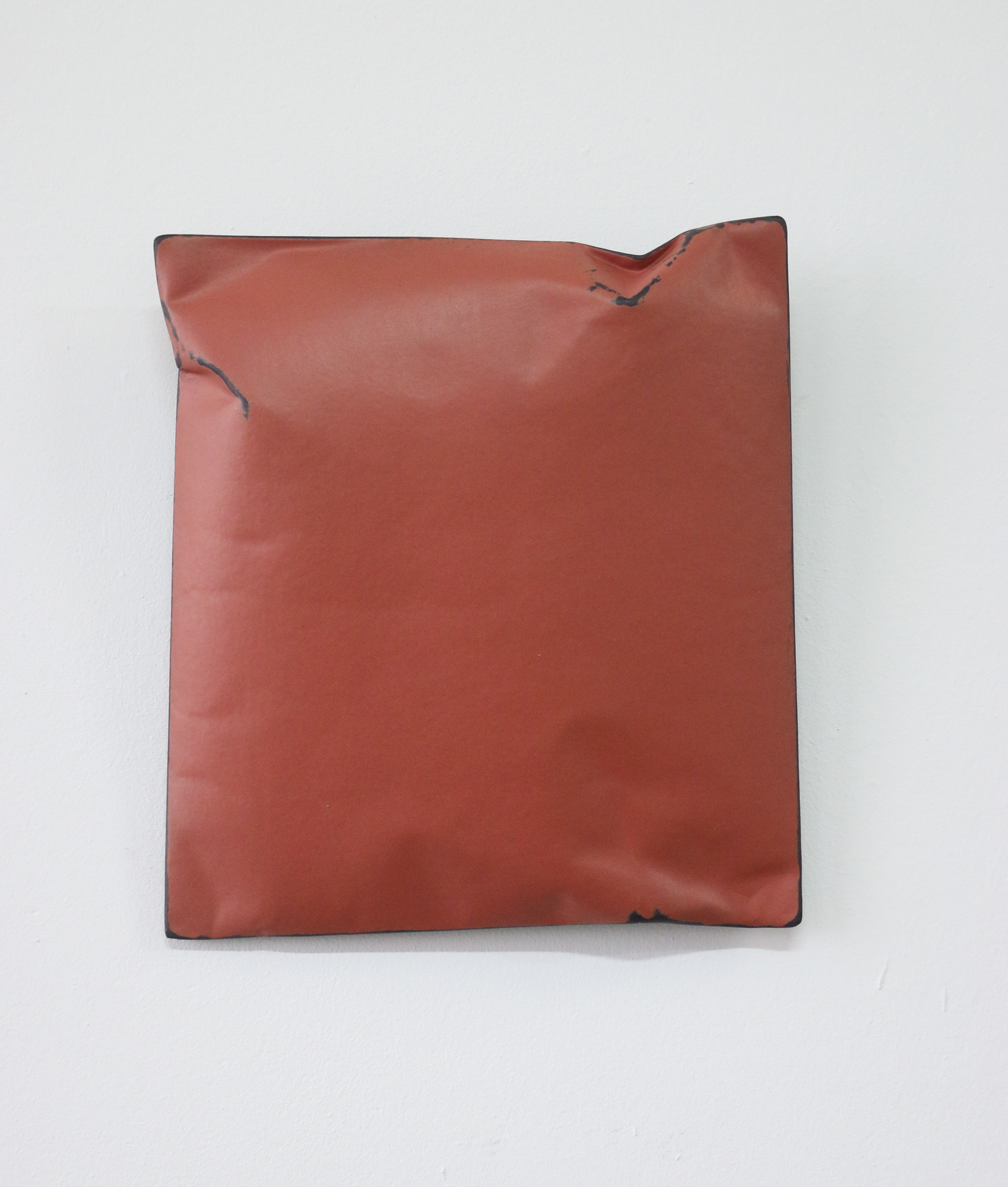JOhan De wit
What does stillness look like? Might we understand an object’s immobility as a moment of pause, imbued with potential and anticipation? The sculptures of Belgian artist Johan De Wit beckon these questions, each understated form providing a springboard from which to jump into material enquiry. De Wit’s self-determined métier is to find solace in this moment between action and inaction. His simple shapes and everyday objects fill the space with an unpretentious detachment, appearing to be the forgotten, yet erratic, belongings of a humble homebody. Gathered together, they act as time capsules, each appearing to have been lying in wait for some time.
Layers of paper form the basis for his most recent series of objects, which are reinforced by resin and marble powder. The paper structures are naturally remodelled during the drying process, creating folds and dents that give his objects a subtle dynamism. De Wit finishes each piece by sanding its surface and applying layers of paint that reflect the day’s shifting light, thereby revealing hardened bevels and wrinkles in an illusion of almost incomprehensible softness. From here his seemingly deflated objects find new purpose: to question what temporary stillness might look (or sound) like. His delicate objects embody this state – an aesthetic which is hard to define and ostensibly susceptible to change.
De Wit’s sculptural work unveils an undeniable fascination with the ordinary. We see splintered ladders, discarded rubble and creaking chairs, but how were these precarious arrangements formed? We see rusted vessels and abandoned tubes, but what did they once hold? These hardened casts of the everyday, although showing signs of neglect and degradation, have not been haphazardly scrapped. They are carefully placed, stacked, inflated and imprinted to tell stories of domesticity and melancholia.
Viewers must defy the urge to poke, mould, squeeze and scrunch them – as one would a pillow or slab of clay – understanding that De Wit’s objects are deceivingly static. They are but a series of material contradictions with nods to the refined craftsmanship of the Flemish and Dutch masters of the Golden Age. He likewise holds materiality, texture and colour as his primary foci, ensuring that every detail is intentional and every fault holds a humble significance, clear echoes of the work of Giorgio Morandi.
Like making those last movements before dozing off, De Wit’s work is imbued with both fatigue and restlessness. He creates an equilibrium between motion and repose that captures his objects’ capacity to change physical character, or at least appear to do so. The unexpected hush of his materials, slightly puffed or drooping, asks how an object will, or possibly already has, altered over time. If a breeze blew through the room, might the sculptures change their shape? Might we hear De Wit’s papers fluttering? Perhaps it is best to wait and see, to stand witness as they may - or may not - breathe with life.
Born in 1960, Johan De Wit lives and works in Ghent, Belgium. He has been particularly productive in the last five years, exhibiting internationally at VOLTA14, Private View Copenhagen, Centrum Netwerk, and the Yogyakarta National Gallery.
靜止的型態是什麼? 我們又能否把物件固定的型態理解成滲透著潛能而停頓的一刻? 比利時藝術家Johan De Wit透過雕塑,以簡樸的形式深入物質探究。De Wit企圖尋找動態與靜態之間的緩衝點;用簡單的形狀和日常用品,通過不加修飾的分隔填補空間,以低調卻不純粹的物件型態融入環境。當它們聚集一起,便形成一個個時間膠囊,呈現出如藝術歷史學家Max Kozloff所道:「昏闕數小時」的效果。
藝術家創造出動與靜之間的平衡點,與此同時,亦捕捉、或至少像是捕捉了作品那能夠改變物理特徵的能力。物料意外的肅靜,稍微的膨脹甚至垂墜,都在探討物體將會如何、或已經如何隨時間而改變。倘若微風輕輕吹拂著作品,雕塑的外型會因此而有所改變嗎?我們會否聽見De Wit的紙張沙沙作響?或許等待,便是最佳答案。
Johan De Wit出生於1960年, 現於比利時根特居住和工作。作品分別在VOLTA14、巴塞爾、意大利、荷蘭、比利時和日惹國家美術館等國際展覽中展出。

